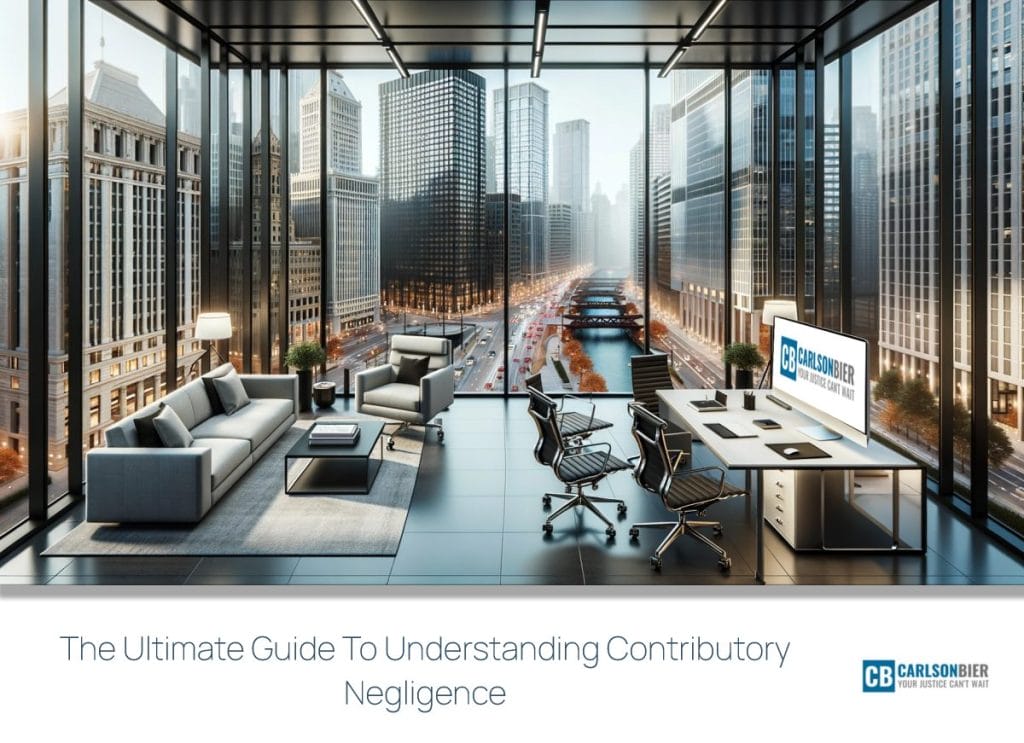Understanding Contributory Negligence: A Closer Look
Every legal case is unique, and personal injury law is no exception. A primary factor that comes into play in this realm is the concept of contributory negligence. The Law Office of Carlson Bier Associates, personal injury law firm in Chicago, Illinois, aims to shed light on this often misunderstood principle. Grounded in the common law, contributory negligence is a defense used in civil lawsuits, especially in personal injury and accident cases.
Defining Contributory Negligence
Contributory negligence stipulates that if an involved party in a lawsuit is even slightly at fault for the injuries they sustained, they may be barred from recovering any compensation. Essentially, it’s a “winner-takes-all” rule. If a plaintiff is found to be 1% at fault, and the defendant 99%, the plaintiff will walk away empty-handed. This principle becomes critical when tackling personal injury cases.
Contributory Negligence VS Comparative Negligence
Before delving deeper into contributory negligence, it’s crucial to distinguish it from comparative negligence. While contributory negligence doctrine operates on a strict cutoff policy, comparative negligence allows for damage recovery, proportionate to the degree of fault. As such, comparative negligence is arguably more lenient than contributory negligence, making an understanding of which doctrine Illinois follows, a matter of great significance.
Illinois and the Modified Comparative Negligence Rule
In the state of Illinois, a modified form of comparative negligence, known as the 51% rule, is practiced. According to this rule, a plaintiff can recover damages as long as they were less than 51% at fault. But, their recovery will reduce in proportion to their assigned degree of fault. Thus, understanding the balance of negligence in Illinois can profoundly impact the outcome of a personal injury lawsuit.
The Impact of Contributory Negligence on Personal Injury Cases
The guarantee of contributory negligence fundamentally alters how personal injury cases are handled. Some key points are:
- It encourages a more meticulous examination of the evidence. As even a minor degree of fault on the plaintiff’s part can result in zero compensation, extra care is often devoted to the examination of evidence and testimonies.
- It creates a significant responsibility for attorneys. Lawyers representing personal injury victims must construct an airtight case that leaves no room for their client’s potential fault.
- It increases trial risks. As the chances of losing everything is high, contributory negligence can discourage victims from pursuing their deserved compensation.
Strategies Employed when Handling Contributory Negligence
In cases where contributory negligence comes into play, experienced legal counsel becomes invaluable. Working towards proving that the plaintiff shared no blame in the accident, or, in the case of Illinois, less than 51% blame, is critical. Deep understanding of negligence law, ability to gather compelling evidence, and skilful questioning of witnesses are among the skills required to successfully handle contributory negligence cases.
Protecting Your Rights in the Face of Contributory Negligence
Since the establishment of contributory negligence can drastically affect a lawsuit outcome, seeking expert legal help is paramount. Ensuring complete compensation recovery requires understanding and navigating the complicated waters of contributory negligence, involving stringent law, rigorous investigation, and aggressive advocacy.
Final Thoughts
Understanding contributory negligence and its impact on personal injury lawsuits requires in-depth legal expertise. It’s a concept that is challenging to grasp, but one that remains central to the dynamics of personal injury law. The Law Office of Carlson Bier Associates in Chicago has dedicated its practice to teaching the public about these multifaceted intricacies, advocating for victims, and battling against the damages of contributory negligence.
For a more comprehensive understanding of the Illinois legal system and its take on contributory negligence, we recommend this resource about the Illinois Courts’ public documents and rules. It provides further details about how contributory negligence works and its applications in the state.

